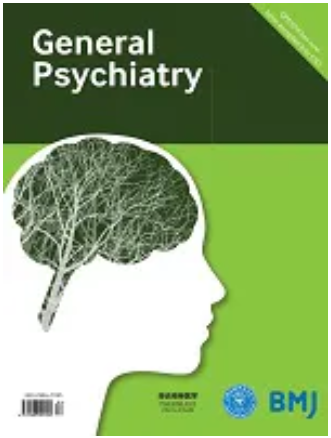Brain-wide activation involved in 15 mA transcranial alternating current stimulation in patients with first-episode major depressive disorder
IF 5.3
3区 医学
Q1 PSYCHIATRY
引用次数: 0
Abstract
Background Although 15 mA transcranial alternating current stimulation (tACS) has a therapeutic effect on depression, the activations of brain structures in humans accounting for this tACS configuration remain largely unknown. Aims To investigate which intracranial brain structures are engaged in the tACS at 77.5 Hz and 15 mA, delivered via the forehead and the mastoid electrodes in the human brain. Methods Actual human head models were built using the magnetic resonance imagings of eight outpatient volunteers with drug-naïve, first-episode major depressive disorder and then used to perform the electric field distributions with SimNIBS software. Results The electric field distributions of the sagittal, coronal and axial planes showed that the bilateral frontal lobes, bilateral temporal lobes, hippocampus, cingulate, hypothalamus, thalamus, amygdala, cerebellum and brainstem were visibly stimulated by the 15 mA tACS procedure. Conclusions Brain-wide activation, including the cortex, subcortical structures, cerebellum and brainstem, is involved in the 15 mA tACS intervention for first-episode major depressive disorder. Our results indicate that the simultaneous involvement of multiple brain regions is a possible mechanism for its effectiveness in reducing depressive symptoms. Data are available upon reasonable request.15 毫安经颅交变电流刺激对首发重度抑郁症患者的全脑激活作用
背景 虽然 15 毫安经颅交变电流刺激(tACS)对抑郁症有治疗效果,但这种 tACS 配置对人脑结构的激活作用在很大程度上仍不清楚。目的 研究通过前额和乳突电极在人脑中以 77.5 Hz 和 15 mA 的频率发出的 tACS 会激活哪些颅内大脑结构。方法 利用八名门诊志愿者的磁共振图像建立了实际的人类头部模型,这些志愿者均患有初次发作的重度抑郁症,未接受过药物治疗,然后利用 SimNIBS 软件进行电场分布分析。结果 矢状面、冠状面和轴面的电场分布显示,双侧额叶、双侧颞叶、海马、扣带回、下丘脑、丘脑、杏仁核、小脑和脑干受到 15 mA tACS 程序的明显刺激。结论 15 mA tACS 对首发重度抑郁障碍的干预涉及整个大脑的激活,包括皮层、皮层下结构、小脑和脑干。我们的研究结果表明,多个脑区同时参与是该疗法有效减轻抑郁症状的可能机制。如有合理要求,可提供相关数据。
本文章由计算机程序翻译,如有差异,请以英文原文为准。
求助全文
约1分钟内获得全文
求助全文
来源期刊

General Psychiatry
医学-精神病学
CiteScore
21.90
自引率
2.50%
发文量
848
期刊介绍:
General Psychiatry (GPSYCH), an open-access journal established in 1959, has been a pioneer in disseminating leading psychiatry research. Addressing a global audience of psychiatrists and mental health professionals, the journal covers diverse topics and publishes original research, systematic reviews, meta-analyses, forums on topical issues, case reports, research methods in psychiatry, and a distinctive section on 'Biostatistics in Psychiatry'. The scope includes original articles on basic research, clinical research, community-based studies, and ecological studies, encompassing a broad spectrum of psychiatric interests.
 求助内容:
求助内容: 应助结果提醒方式:
应助结果提醒方式:


